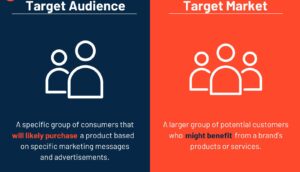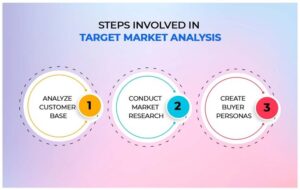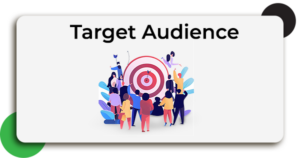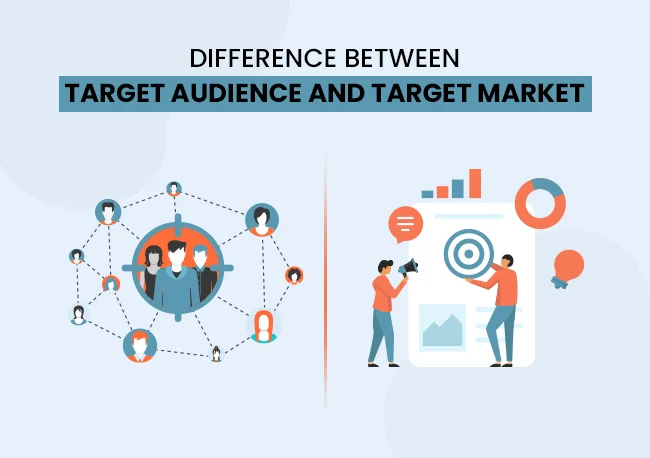How to focus your marketing for maximum impact
Nearly 60% of marketers admit to wasting resources targeting the wrong audience.” Think about that. Over half of us are spending time, energy, and money trying to connect with people who were never going to buy from us in the first place. Why? Because we confuse target audience with target customers.
This is a fundamental misunderstanding that could cost you conversions, profits, and brand loyalty. Here’s the kicker: not all target audiences are your customers, but all your customers are part of your target audience. If that sounds like a tongue twister, stick with me. By the end of this article, you’ll know exactly what this means and how to apply it to sharpen your marketing efforts.
What’s the difference?
– Target audience: This is the larger group of people who might interact with your brand. They could like your posts, read your blogs, or even follow you on social media. But that doesn’t mean they’ll buy.

– Target customers: These are the gold nuggets in that audience—individuals most likely to purchase. They need your product, value your solution, and have the means to get it.
Here’s an analogy: Think of it like fishing. Your target audience is the entire lake. Your target customers? The fish you’re trying to catch. Sure, the lake is vast, but not everything in it is your prize.
Why this matters
When you don’t differentiate between your audience and customers, you risk wasting resources, creating unfocused messaging, and alienating the very people you want to reach. Here’s how knowing the distinction can transform your strategy:
- Sharper messaging
– Broad messaging might appeal to your audience, but targeted messaging speaks directly to your customers’ needs and drives action.
- Better ROI
– Instead of spending money reaching everyone, you focus on converting the right people—your target customers.
- Efficient use of resources
– You’re no longer trying to please everyone. Instead, you tailor your campaigns for the people who matter most.
How to identify your target audience and customers?

Step 1: Start broad, then narrow down
Use demographic and psychographic data to understand the broader audience first.
– Demographics: Age, gender, location, income, education.
– Psychographics: Interests, values, hobbies, and buying behaviors.
Tools like Google Analytics, Facebook Audience Insights, and surveys can help here.
Step 2: Build buyer personas
Buyer personas are fictional representations of your ideal customers. They help you focus on individuals, not abstract groups. For example:
– “Emma, the busy mom”: Needs affordable, time-saving solutions.
– “James, the tech-savvy millennial”: Values cutting-edge innovation and sustainable practices.
Step 3: Segment your audience
Group your audience into smaller segments based on shared characteristics.
For example:
– Segment A: Budget-conscious buyers.
– Segment B: Early adopters of technology.
– Segment C: Eco-conscious consumers.
Step 4: Track behavior
Use tools to monitor who’s engaging and, more importantly, converting. Look for patterns in purchasing, browsing, and interaction habits.
How to market to both groups
For the target audience
Your goal here is to build awareness.
– Use broad-reaching campaigns like social media ads, blog posts, or influencer partnerships.
– Focus on storytelling to make your brand relatable.
Example: A skincare company might share educational posts about skincare routines to a broad audience.

For target customers
Here, you’re nurturing leads and driving conversions.
– Use personalized emails, retargeting ads, and exclusive offers.
– Highlight specific solutions to their pain points.
Example: That same skincare company might send targeted ads to people who’ve previously browsed anti-aging products, offering a discount on their best-selling serum.
Common pitfalls and how to avoid them
- Casting too wide a net
– Mistake: Trying to appeal to everyone in your audience.
– Solution: Regularly refine your target customer profiles based on data.
- Ignoring the buyer’s journey
– Mistake: Assuming everyone is ready to buy.
– Solution: Create tailored content for each stage—awareness, consideration, and decision.
- Failing to use feedback
– Mistake: Ignoring customer insights.
– Solution: Conduct surveys, read reviews, and use this feedback to adjust your targeting.
Case study: Apple vs. Samsung
– Apple: Appeals to a broad audience of tech lovers, but its target customers are those willing to pay a premium for sleek design and brand status.
– Samsung: Targets a similar audience but caters to customers who value customization and affordability.
Both brands thrive because they know how to balance broad appeal with focused customer targeting.
Closing the gap between audience and customers
If your marketing feels like shouting into a void, it’s time to step back. Define your audience. Identify your customers. Then align your strategies.
Start small:
- Build one buyer persona.
- Create a campaign tailored to that persona.
- Analyze the results and refine.
Marketing isn’t about shouting louder; it’s about whispering the right words to the right people. The clearer your distinction between audience and customers, the stronger your results will be.
Conclusion
Understanding the distinction between your target audience and your target customers is not just a matter of semantics, it’s a strategy that can transform your marketing efforts. Your target audience is where you cast the net, but your target customers are the ones you’re reeling in.
When you focus your energy on identifying and connecting with your target customers, you’re not just selling products or services. You’re solving problems, building loyalty, and maximizing your return on investment. At the same time, maintaining awareness of your broader audience ensures you continue to nurture new opportunities and build brand recognition.
So, here’s the challenge: take action. Start refining your customer personas, align your campaigns to their specific needs, and use insights to perfect your messaging.
